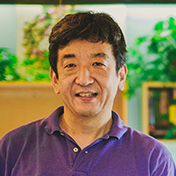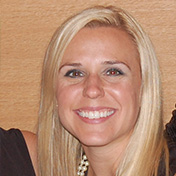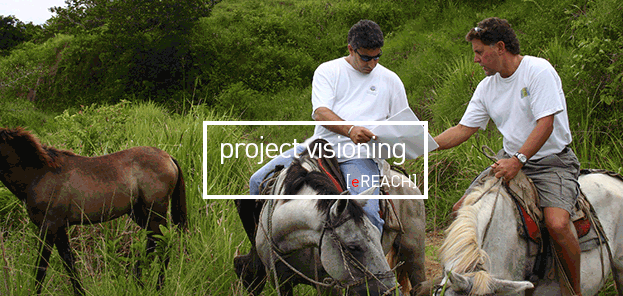Places that add social, environmental and economic value to society serve as exemplary precedents and reminders of what can be achieved with good planning. Such real estate developments and outdoor spaces are created through a process that starts with a distinctive vision and stated purpose – much before pencil is ever placed to paper or brick to mortar.
EDSA believes that having a clear, well-thought-out and well-delineated vision at the onset of an assignment is critical to a project’s strategic success and long term sustainability. Before anything happens, existing communities, key stakeholders, public officials, land owners, property developers and design consultants must define a vision that anticipates how a real estate endeavor will positively change the status quo. Visioning is not a roadmap – that's the purpose of planning – but rather a set of defined goals and expectations stated in a clear and simple way to describe why the project deserves to exist.
A successful visioning process results from answering some basic, but critical questions. What is the anticipated end result? Who will the end users be? How will they thrive in the places we help create? How will people, environment and economy benefit in the short-term and the long-term? What will the legacy of this project be? The point being, a planning and design process starts from a series of ideas and goals that focus on results.
Throughout our history, EDSA has orchestrated and facilitated Visioning Workshops as a master-planning and consensus-building tool. Through this process, we aim to understand the lifestyle, values, intent and purpose of a project as we collaborate to assess and establish a unified vision for development. This abbreviated, yet intense step in the design process is oriented toward providing efficient, focused solutions. When possible, it should involve a team of experts to address economic, environmental, political, market and social tendencies. It can also involve on-site design studies to identify site opportunities and constraints, infrastructure needs, circulation patterns, land use relationships and other key indicators or potential program elements from which to build the vision. This introspective process results in foundational design drivers and a phased program approach for master planning and design to proceed. It typically culminates in an on-site presentation to the client.
The Visioning Process influences the design strategy by aligning and defining the client’s or stakeholder group’s philosophy, thus setting the course for an informed and successful project design process and implementation.
To learn more about Visioning Workshops, contact us directly at info@edsaplan.com
meet the faces of edsa



Landscape forms, fauna and the outdoors have always been a point of fascination at the Hallgren home, originating from Katy’s grandfather, a Forestry Professor. She was subsequently captivated by purposeful storytelling through environmental design. As a designer, Katy creates stage sets for working, learning, playing and reflecting thereby influencing life experiences as you move through a space. After receiving her Bachelors in Landscape Architecture from Oklahoma State University, Katy joined EDSA in 2005. She has had the opportunity to work in nearly every EDSA office including her current position in our Shanghai Studio. Wherever she hangs her hat, Katy’s design influences are the result of studio collaborations, regional appropriateness, passionate innovation and a technological prowess.
Landscape Architecture was an emerging field in Korea when Hongbum attended school and he was immediately drawn to the intriguing relationship between crafted landscapes and architecture. With a desire to study abroad, Hongbum received a Masters in Design Studies from Harvard’s Graduate School of Design and a Masters of Landscape Architecture from Cornell University. Armed with a solid education, he gained specialized knowledge of sustainability design and feasibility studies while working in Canada. A current member of the Sutton Studio, Hongbum is a LEED accredited professional who enjoys integrating hand graphics and digital forms into his work. When developing a landscape strategy, he is most energized by the interactive environments between clients and consultants. Hongbum joined EDSA in 2006.
Human Resources is an ideal career for Cara as it blends her love for psychology and business. Drawing upon each employee’s collective knowledge, work ethic and communication style, she remains intrigued by how people behave, what motivates them and their passion for performance. A strong proponent that a company is known by the people it keeps, Cara’s focus is on refining strategies and policies inherent in helping create a more forward-thinking, creatively-enriched workplace. Having recently rejoined EDSA, she oversees professional development, training and strategic staffing; nurturing EDSA’s greatest assets: its culture and people. Cara earned a Bachelor in Human Services from Villanova University and a Masters in Human Resource Management from Nova Southeastern University.

Make sure time is well spent pursuing real clients and real projects.
studio insight
In today’s global economy, design must navigate many complex relationships. For the Behling Studio, this means exploring how form and aesthetics impact viability and value. Real estate development must be a collaborative process between clients with realistic goals, and trusted consultants with whom alliances have been strengthened over time. Being conscious of other’s needs and how you can help them, leads to career-long relationships. Out of these relationships, new business opportunities are generated and project implementation becomes easier. Asking the right questions, coupled with having a working knowledge of how things are built, and how subtle alterations in the approach and design can impact implementation, is required to be successful in today's efforts. The Behling Studio has a rich portfolio of built projects. They currently have seven projects under construction, including Four Seasons Dubai, Four Seasons Bahrain, Atlantis Hainan, and the Dubai Opera House. The best showcase of talent, skill, and ability is shown through the quality of built works. Bob Behling and his team credit their success to great clients, amazing projects, and talented colleagues with whom they’ve had an opportunity to work.
For more information on the Behling Studio visit
http://www.edsaplan.com/en/Team/Studios/Behling
With the theme of Career Discovery, National Landscape Architecture Month (NLAM) 2014 spurred a countrywide movement, teaching children, young adults, and even teachers just how artfully landscape architects impact worldwide environmental and sustainable design. Sponsored by the American Society of Landscape Architects (ASLA), regional chapters hosted a series of public awareness events to bring attention to the overriding contribution our profession plays in helping improve quality of life in towns and cities across the globe. National Landscape Architecture Month also coincided with Earth Day on April 22 as well as Frederick Law Olmsted's birthday on April 26.
To learn more, visit our Facebook page: http://on.fb.me/1lDMfVh




